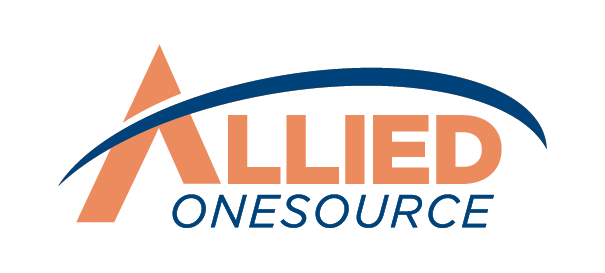How to Retain Your Best Contractor Post-Assignment
Your best contractors finish their assignments and disappear, taking specialized knowledge and proven performance with them. You replace them with new hires who need weeks to understand your processes, build stakeholder relationships, and reach the productivity levels their predecessors already achieved.
According to Staffing Industry Analysts (SIA), turnover costs businesses an average of $36,723 annually in rehiring and lost productivity.¹
Strategic workforce planning changes this cycle by identifying high-performing contractors before their assignments end and redeploying them to new roles within your organization. This transforms temporary staffing from a constant recruitment cycle into a talent lifecycle management system that preserves institutional knowledge, reduces hiring costs, and maintains project continuity.
The Hidden Costs of Letting Top Contractors Go
Most organizations track the obvious expenses of contractor turnover—recruitment fees, posting costs, and interview time. The real financial impact runs much deeper through operational disruptions that are compounded over multiple hiring cycles.
Knowledge Transfer and Training Reinvestment
When experienced contractors leave, they take project-specific expertise that can't be replicated through documentation alone. These workers understand your internal processes, know which stakeholders make decisions quickly, and have already navigated the learning curve that trips up new hires. It can take up to 1-2 years for a new hire to fully learn and excel in that role.²
Your replacement contractors start from zero, requiring the same orientation, system access setup, and stakeholder introductions you provided to their predecessors. This creates a hidden cost center that grows with each turnover cycle.
Project Continuity and Timeline Disruption
Contractor departures create timing gaps that push back project milestones and deliverables. These delays become more expensive when high-performing contractors leave between related assignments or during peak business periods.
New contractors need weeks to understand project context and team dynamics, which extends timelines even when replacement happens quickly. The ripple effects impact other team members who must slow their work to bring replacements up to speed.
Cultural Integration Investment Loss
Contractors who have successfully integrated with your teams represent a significant cultural investment that disappears with turnover. These workers understand your communication styles, decision-making processes, and unwritten rules that make projects run smoothly.
Replacing them means rebuilding stakeholder relationships and reestablishing trust that took months to develop. New contractors must learn not just what to do, but how your organization prefers to work.
How to Identify High-Value Contractors for Retention
Effective contractor retention starts with systematic identification of contractors who demonstrate both high performance and strong cultural alignment. Your talent retention plan needs clear criteria and tracking processes to recognize valuable contractors before their assignments end. This include:
Establish Performance Tracking Systems
Document specific contributions that extend beyond assigned tasks and original project scope. Track instances when contractors solve problems independently, suggest process improvements, or take initiative during unexpected challenges.
Create detailed records of these contributions rather than relying on general performance reviews. This documentation provides objective data for strategic workforce planning decisions and helps identify contractors who add measurable value beyond their immediate deliverables.
Assess Cultural Integration Indicators
Collect regular feedback from team members, project managers, and stakeholders who work directly with contractors. Monitor how contractors participate in team meetings, respond to organizational changes, and align with your company's communication styles and work approaches.
Strong cultural integration shows through positive stakeholder relationships and seamless collaboration with permanent staff. Contractors who receive consistently positive feedback from multiple departments demonstrate the interpersonal skills necessary for successful redeployment across different projects and teams.
Evaluate Skills Transfer and Mentorship Potential
Identify contractors who actively share knowledge with team members and show willingness to train others. Watch for contractors who participate in knowledge transfer sessions, create documentation that helps other team members, and demonstrate curiosity about broader organizational objectives.
These behaviors indicate contractors who view themselves as team contributors rather than individual performers. Their willingness to develop others suggests they would adapt well to expanded responsibilities in future assignments.
Monitor Client and Project Feedback Patterns
Document direct client praise, positive project outcomes, and specific instances where clients request the same contractor for follow-up work. Track patterns in client satisfaction scores and repeat assignment requests.
Clients often recognize exceptional performance before internal managers do, making their feedback a reliable indicator of contractor value. Strong client relationships represent an asset that extends beyond individual projects and creates competitive advantages when contractors continue working with your organization.
Create Early Engagement Protocols
Begin retention conversations approximately 30 days before assignment completion to assess mutual interest and align contractor availability with upcoming projects. Share visibility into your project pipeline and discuss potential opportunities that match contractor skills and interests.
Early engagement allows contractors to make informed decisions about their next assignments while giving you time to adjust project timelines or requirements. This proactive approach demonstrates your investment in long-term contractor relationships and increases the likelihood of successful redeployment.
How to Build Long-Term Contractor Relationships
Successful contractor retention extends beyond individual assignments to create ongoing relationships with valuable talent. To build long-term contractor relationships:
Maintain Strategic Contact Between Assignments
Keep contractors engaged through industry insights, project updates, and professional development opportunities. Regular communication keeps your organization top-of-mind when contractors evaluate multiple opportunities.
Create Streamlined Redeployment Processes
Develop abbreviated onboarding for returning contractors that acknowledges their existing knowledge. Expedite security clearances and system access to demonstrate efficiency and create positive redeployment experiences.
Develop Contractor Alumni Networks
Build referral incentive programs that leverage contractor networks to access quality talent. High-performing contractors often recommend other qualified professionals, expanding your talent pipeline while reinforcing existing relationships.
Establish Flexible Engagement Models
Offer part-time assignments or consulting arrangements during gaps between full projects. These flexible options maintain contractor connections and provide income continuity that builds loyalty to your organization.
Measuring Contractor Retention Success
Track these key metrics to evaluate your contractor retention and strategic workforce planning effectiveness:
- Redeployment rate: Percentage of contractors accepting new assignments within your organization
- Time-to-fill reduction: Days saved when using retained contractors versus external hiring
- Cost-per-hire comparison: Recruitment expenses for redeployed contractors versus new hires
- Contractor satisfaction scores: Feedback ratings from contractors who accept multiple assignments
- Client continuity improvements: Client satisfaction when working with familiar contractors versus new team members
Ready to Transform Your Contractor Strategy?
Your talent lifecycle management strategy starts with recognizing that your best candidates might already be working for you. Allied OneSource helps companies develop comprehensive contractor retention programs that preserve institutional knowledge while reducing recruitment costs.
Contact us today to discover how strategic workforce planning can strengthen your talent pipeline and deliver measurable results.
References
1. Ahuja, Amrita. “Cost of Turnover Climbs, but Hiring Plans Stay Strong.” Staffing Industry Analysts, 13 June 2025, https://www.staffingindustry.com/news/global-daily-news/cost-of-turnover-climbs-but-hiring-plans-stay-strong.
2. Dennison, Kara. “The Importance of Succession Planning Now More Than Ever.” Forbes, 25 June 2024, https://www.forbes.com/sites/karadennison/2024/06/25/the-importance-of-succession-planning-now-more-than-ever/.











